All Research & Forecasting articles – Page 2
-
 White papers
White papersScaling for success: creating value in mid-market infrastructure
In the mid-market infrastructure market, scaling a business into a fully functional institutional platform and capturing the associated scale premium are powerful drivers of value at exit. Among value-add approaches, buy-and-build can unlock significant growth. Over the past decade, InfraVia has consistently scaled platforms through a balanced combination of organic growth (CAPEX) and acquisition-led expansion (M&A).
-
 White papers
White papersTimber’s tipping point: why global demand is set to outpace supply by 2050 according to Gresham House analysis
The ongoing increase in Greenhouse Gas emissions from human activities since the industrial revolution is a major contributor to climate change and rising global temperatures; average global temperatures have risen by 1.2°C according to The National Centre for Atmospheric Science, 2025. There is a strong global consensus that urgent and extensive action is needed, both to limit future warming and to adapt to a changing world to reduce the impact of climate change.
-
 White papers
White papersThe evolution of Real Assets and the key to overcoming growing complexity
Real assets fund managers are pursuing ambitious growth targets the coming years to stay ahead of competitors in today’s market, however, they are also facing increasing complexity in their operations and reporting requirements to support such growth ambitions.
-
 White papers
White papersTargeted investment: Untangling the building and the grid
Integrating the right metrics into the investment process can help to effectively promote sustainability and boost returns.
-
 White papers
White papersKeep calm and carry on? The ISA Outlook 2025, six months in
In a recent conversation, Dominic Silman and Brian Klinksiek revisited LaSalle’s ISA Outlook themes amid 2025’s rapidly developing and unpredictable geopolitical and macroeconomic climate.
-
 White papers
White papersQ&A with Global CEO Mark Gabbay
Real estate: The world’s simplest, most complicated asset class
-
 Video
VideoGlobal REITs Update – Q1 2025
In our video update for the 1st quarter of the 2025 calendar year, Portfolio Manager, Marco Colantonio covers key developments in the Global REIT sector and market insights
-
 Research Report
Research ReportIncrease In Conversions Expected To Benefit European Office Market Recovery
In this publication, we update our analyses for European office markets. Our initial analyses show that GenAI is expected to have a positive impact on office employment as it will automate certain routine tasks, while creating new higher value-add AI-related jobs. London, Paris and Frankfurt are expected to benefit most from future AI adaptation.
-
 White papers
White papersThe European market view: Does uncertainty reign?
Breaking economic patterns: Europe’s real estate landscape
-
 Research Report
Research ReportInfrastructure Quarterly: Q2 2025
Although the start of 2025 saw rollercoaster market volatility and tense global trade dynamics, infrastructure markets demonstrated resilience and adaptability. The rise in capital inflows and doubling of greenfield deal activity in data centers and renewable energy speaks to the market demand for infrastructure despite pending tariffs and policy uncertainty.
-
 White papers
White papersQ3 2025 Global Trends and Tactics : Real estate opportunities and risks in the current environment
Global real estate returns positive last four quarters
-
 White papers
White papersSchroders Capital Global Real Estate Lens Q2 2025: your go-to guide to global property markets
Valuations and transaction prices have continued to stabilise and recover despite uncertainties.
-

-
 White papers
White papersRedevco publishes its 17th Responsible Investment Report
We are proud to present our 17th Responsible Investment Report, which is a testament to our mission of transformative real estate that builds value for investors and enriches communities. This report, Connecting Performance to Impact, details the progress towards our sustainability targets in 2024 across four impact pillars: built environment, natural environment, social value and responsible governance.
-
 White papers
White papersWhy Australian office: Perception, reality and the great opportunity
Over the past four years, the performance of the office market was dominated by the uncertainty cast by the pandemic-induced lockdowns and the largest interest rate cycle in decades. The consequential unknowns over workplace strategies, the economy, and adjustment to higher rates contributed to the largest valuation repricing since the GFC.
-
 White papers
White papersSeizing the “Debt-First” Office Moment Timing: Extended, Opportunities Unlocked
As we progress into 2025, Hines Research believes market conditions continue to support the thesis for debt investment in the U.S. office sector.
-
 White papers
White papers2025 Half Year Results
We use our expertise to access, deploy, manage and invest equity to create value and generate superior returns for our investor customers
-
 White papers
White papersEurope Real Estate Sector Report
Europe’s real estate market is showing early signs of recovery, with industrial and residential sectors leading the way, while office spaces continue to face challenges. Investors should focus on high-quality assets in resilient submarkets to navigate the evolving landscape.
-
 Research Report
Research ReportReal Estate House Views H1 2025
Explore our collection of in-depth outlooks on real estate investing globally.
-
 White papers
White papers2025 Europe Self Storage Sector Update
The self storage sector in the Europe continues to see strong fundamentals, with strong rental growth and stable occupancy despite a marked increase in supply reflecting demand for the sector


